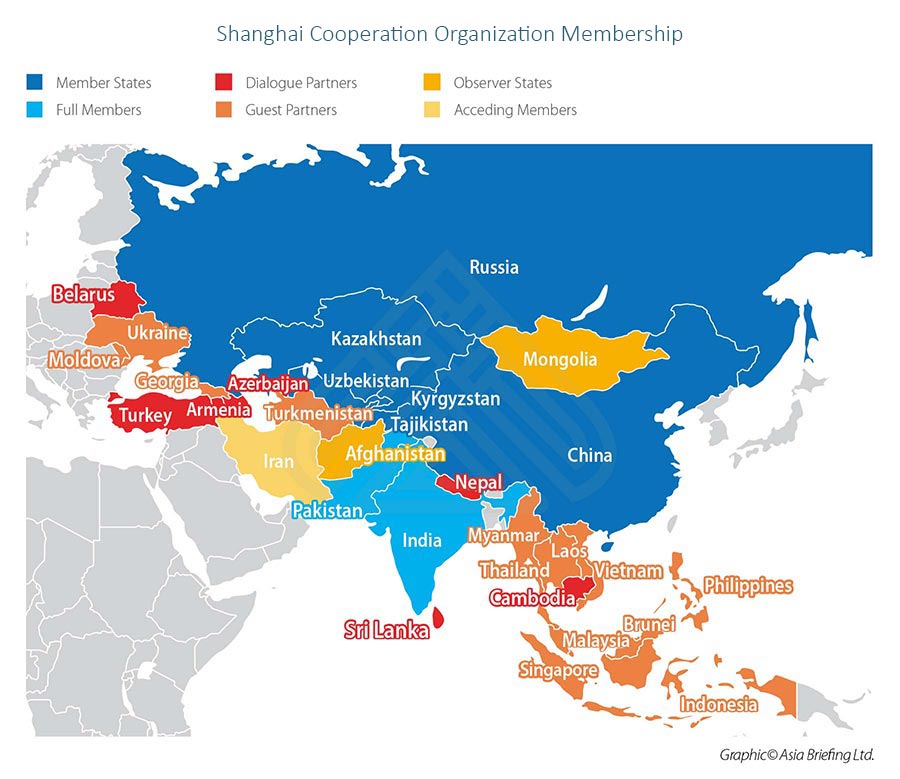Ruble, Yuan & Rupee To Dominate Future Belt & Road Eurasian Transactions
Op/ed by Chris Devonshire-Ellis
Moves by numerous countries to move away from US dollar transactions have been gathering steam, and look set to develop further as trust in the United States continues to slump in the wake of trade threats and overly aggressive use of the US dollar as a weapon. The attitude towards the dollar as a negative trade energy created by Washington is now gaining a pushback in the opposite direction.
Beijing and Moscow, in addition to New Delhi have well noted how the United States has used the US dollar as a weapon to inflate sanctions, not just with China but also Iran, Pakistan, Turkey and other countries that these trade with. Washington from time to time wishes to punish countries who don’t follow US trade directives. But for every action, a reaction occurs.
What the United States does in terms of using trade as a weapon is now hurting significant economies and their respective trade interests.

| Belarus | Iraq | Sudan |
| Burundi | Lebanon | South Sudan |
| Central African Republic | Libya | Syria |
| China | Mali | Turkmenistan |
| Comoros | Mauritania | Ukraine |
| Crimea | Myanmar | Venezuela |
| Cuba | Nicaragua | Yemen |
| Democratic Republic of the Congo | North Korea | Zimbabwe |
| Equatorial Guinea | Papua New Guinea | |
| Eritrea | Russia | |
| Iran | Somalia |
*Does not include other limited or specific sanctions against foreign companies or individuals
This desire to protect their economies from sanctions placed upon what are some significant trade partners has lead to the member countries of the Shanghai Cooperation Organisation (SCO) agreeing to send their recommendations to finalise a roadmap to conduct bilateral trade, investments, mutual settlements and issue bonds in national currencies. This system is being now being fast-tracked after US actions during the Covid-19 pandemic, which included pressure from Washington on the IMF not to assist Iran for COVID relief funding. Iran has consequently been badly hit by the virus, a situation that has been viewed with considerable anger in the SCO orbit as it also jeopardized regional health, undermining Eurasian and Middle Eastern anti-infection protocols.
The SCO includes China, India, Kazakhstan, Krygyzstan, Pakistan, Russia, Tajikistan & Uzbekistan, while Iran & Turkey are dialogue partners and involved in discussions. Other interested and participating states include Afghanistan, Armenia, Belarus, Mongolia in addition to Cambodia and Nepal. This effectively represents the complete land mass from China to Europe, and is home to some of the fastest growing global economies, five nuclear states, as well as 50% of the global population. The consequence is that all these countries have established linkages with China and Russia for trade and economic sustainability. Russia is selling Venezuela’s crude oil. China diverted Iranian crude with Yuan payments and initiated the Iran-China silk route agreements. China is now Iran’s largest trade partner. Iran has diversified trade with Afghanistan and oil for gold with India.

Russia is also negotiating currency swap agreements with various trade partners. The Eurasian Economic Union (EAEU) with Armenia, Belarus, Kazakhstan, Kyrgyzstan, and Russia comprises of the ‘road’ part of the BRI. With a population of 183 million and GDP of some US$ 5 trillion, 70% of EAEU trade is already in Rubles and local currencies. Several Central and West Asian countries want to join the EAEU, including India, Turkey and Thailand, while Vietnam already has a full trade agreement with them. This saves the exchange charges of the dollar and the piggy-backing of fee-charging US intermediary banks for transactions that are nothing to do with the United States.
They are being joined in turn by Brazil and South Africa in the BRICS grouping, who have also stated they wish to pursue settlements in regional currencies and move away from US dollar trade designations. The momentum is building fast, and other countries are sure to follow suit in time. Other trade relations are also moving away from the US dollar, with the European Union and Russia currently negotiating to trade in Euros and Rubles.
India meanwhile has developed Rupee-Dirham currency trade with the UAE, approved a US$75 billion currency swap deal with Japan and a US$400 million currency swap with ASEAN nations. India is also trading non-dollar mediated rates of exchange for Turkish and Korean currencies, and Turkey is trading in national currencies with China and Russia.
China has steadily been internationalizing the RMB Yuan to the extent it is now included in the IMF basket of currencies, and has risen to fifth place as a global currency, representing 15% of global currency holdings, with Russia holding 25% of Chinese RMB international reserves while dumping the US dollar in return. These moves will mean that in less than 5 years, the US dollar will account for less than half of global trade. These developments have been fast. Just over two years ago I asked What Currencies Will Be Used Along The Belt & Road? Now we know. The Eurasian Belt & Road will be dominated by the Russian Ruble, Chinese RMB Yuan and the Indian Rupee in terms of trade.
This article has been updated and amended from the piece “The Road Part Of The Belt & Road Initiative Now Has 70% Of Its Trade In Russian Rubles” that appeared on Russia Briefing on June 2.
Related Reading
- The US Addiction to the Marshall Plan, Using the US Dollar as a Weapon, and the Impact upon the Belt and Road and Globalization
- BRICS Bank To Move Away From US Dollar Loans
About Us
Silk Road Briefing is written by Dezan Shira & Associates. The firm has 28 offices throughout Asia, and assists foreign investors into the region. For strategic advisory and business intelligence issues please contact the firm at silkroad@dezshira.com or visit www.dezshira.com





